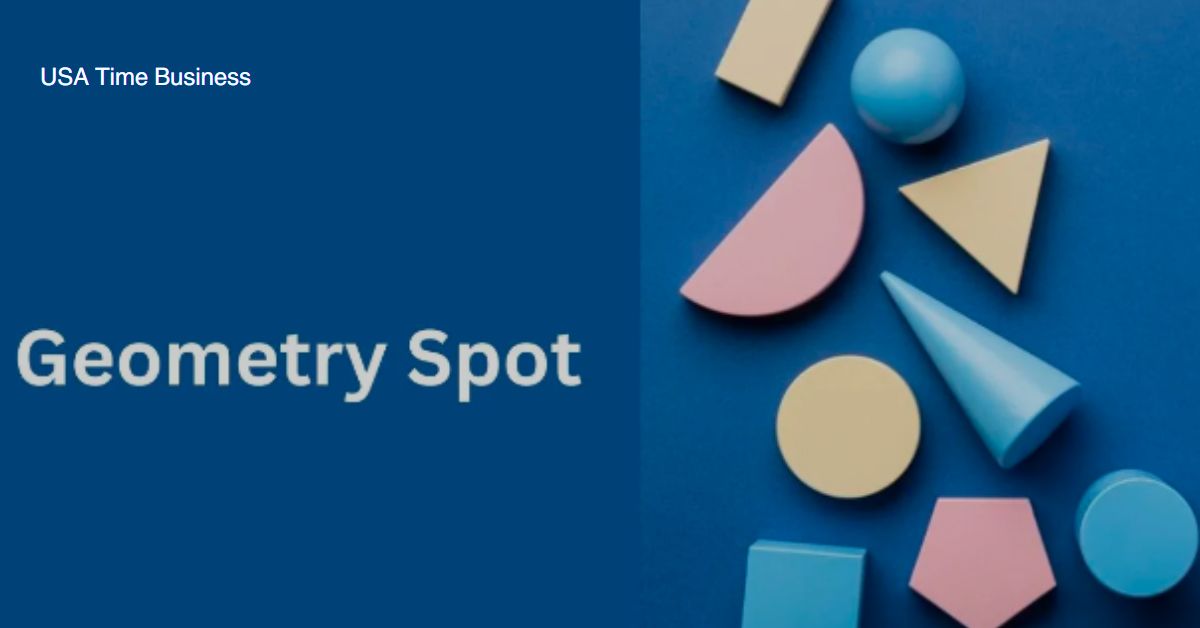Ready to unlock the power of TCB scans and delve into a world where cutting-edge technology meets groundbreaking medical advancements? Look no further! This comprehensive guide will unveil the fascinating world of TCB scans, taking you through their history, types, benefits, and potential risks. Whether you’re a healthcare professional or simply curious about the wonders of modern science, prepare to be captivated as we explore how these innovative scans are revolutionizing industries across the globe.
Now, please put on your virtual lab coat and join me as we embark on an exciting journey exploring the seemingly endless possibilities of TCB scans!
Contents
- 1 What are TCB Scans?
- 2 The History and Evolution of TCB Scans
- 3 Types of TCB Scans
- 4 Benefits of TCB Scans
- 5 How to Prepare for a TCB Scan
- 6 Common Uses of TCB Scans in Different Industries
- 7 Potential Risks and Side Effects of TCB Scans
- 8 Future Developments and Advancements in TCB Scanning Technology
- 9 Conclusion:
What are TCB Scans?
TCB scans, or Transcranial Doppler scans, are a non-invasive imaging technique that allows healthcare professionals to examine the blood flow in and around the brain. Using high-frequency sound waves, TCB scans provide detailed information about the velocity and direction of blood flow within the cerebral arteries.
These scans have become an invaluable tool in diagnosing various neurological conditions such as stroke, brain tumors, and vascular malformations. They can also help monitor patients with traumatic brain injuries or those at risk of developing complications related to sickle cell disease.
The procedure involves placing a small probe against the skull to emit ultrasound waves, bouncing off red blood cells passing through the blood vessels. Medical professionals can analyze the visual representations of the returned signals on a computer screen.
One of the critical advantages of TCB scans is their ability to offer real-time data on cerebral hemodynamics without requiring invasive procedures or exposure to ionizing radiation. This makes them particularly useful in monitoring patients during surgery or providing insights into potential causes behind symptoms like headaches or dizziness.
Moreover, TCB scans are relatively quick and painless compared to other diagnostic methods. They can be performed bedside in hospitals or clinics without requiring extensive preparation beforehand. Patients undergoing these scans must adhere to their physician’s special instructions regarding any necessary fasting or medication adjustments before the procedure.
In recent years, advancements in technology have further enhanced TCB scanning techniques. For instance, 3D visualization capabilities allow for more accurate assessments of complex vascular structures within the brain. Additionally, software algorithms enable automated measurements and analysis of blood flow parameters with greater precision.
As we explore this intriguing field later in this guide – from common uses across different industries to potential risks associated with TCB scanning – you’ll gain a deeper understanding of how these cutting-edge tools transform medical practices worldwide! So strap yourself in for an enlightening journey as we uncover the full potential of TCB scans.
The History and Evolution of TCB Scans
TCB scans, also known as Total Carbon-Based scans, have a fascinating history that traces back to the early days of medical imaging. In the past, doctors relied on X-rays and other conventional methods to visualize internal structures within the human body. However, these techniques needed more capabilities when detecting specific carbon-based compounds.
As technology advanced, researchers began exploring new ways to enhance medical imaging. This led to the development of TCB scans – a groundbreaking innovation in diagnostic imaging. The first TCB scanners were large and cumbersome machines that used gamma rays to detect carbon-based molecules in tissues and organs.
Over time, advancements in computer technology allowed for more compact and efficient TCB scanners. These modern devices utilize sophisticated algorithms and software programs for image reconstruction, providing healthcare professionals with detailed visualizations of carbon-based substances within the body.
Today’s TCB scanning technology has come a long way since its inception. Medical professionals can now acquire highly accurate images for diagnosis and treatment planning with faster processing rates and improved resolution. Moreover, ongoing research continues to push the boundaries of what is possible with this innovative imaging technique.
In recent years, there have been exciting developments in using TCB scans beyond traditional medical applications. Industries like agriculture have started implementing TCB scanning technologies to assess soil quality and monitor crop health. Environmental scientists are also using these scans to investigate ecosystems’ carbon cycles.
Each year, we witness further advancements in TCB scanning technology that expand its potential uses across various fields beyond medicine alone.
Stay tuned for Part 3, where we delve into the different types of TCB scans available today!
Types of TCB Scans
TCB scans come in various types, each serving a specific purpose and providing valuable insights into different aspects of our health. Let’s examine some of the most popular TCB scan kinds now offered in more detail.
1. Structural TCB Scans: These scans examine the structure and integrity of tissues, bones, and organs within the body. They can help detect abnormalities such as fractures, tumors, or other issues affecting proper functioning.
2. Functional TCB Scans: Unlike structural scans, functional TCB scans assess how well different body parts perform their functions. These scans provide crucial information about organ function and overall health by measuring blood flow, oxygenation levels, or metabolic activity in specific areas.
3. Diagnostic TCB Scans: As the name suggests, diagnostic TCB scans are used to identify diseases or conditions affecting various systems in the body. These include X-rays for bone fractures or lung infections and MRI or CT scans for detailed imaging of internal organs.
4. Screening TCB Scans: Screening tests aim to detect potential health problems before symptoms manifest themselves fully. Mammograms for breast cancer detection and colonoscopies for identifying colon polyps are examples of screening TCB scans that have proven to be life-saving tools.
5. Interventional/Therapeutic Guidance Scans: In some instances where medical procedures need precise guidance during surgery or treatments like radiation therapy or chemotherapy require accurate targeting, interventional/therapeutic guidance scanners play a vital role by providing real-time images during these interventions.
Technological developments have produced increasingly specialized scanning methods for particular uses in various industries, including medical research.
Benefits of TCB Scans
TCB scans offer many benefits, making them an invaluable tool in various industries. These scans provide detailed and accurate information about the target area, allowing for precise analysis and diagnosis. Better patient outcomes and more efficient treatment programs may result from this.
Furthermore, TCB scans are non-invasive, meaning no intrusive techniques or surgical incisions are needed. As a result, patients experience minimal discomfort during the scan and have shorter recovery times than traditional methods.
Furthermore, TCB scans are highly versatile and can be used across medical, research, and engineering fields. In treatment, these scans aid in detecting tumors or organ abnormalities with remarkable accuracy. They also make it possible for scientists to investigate cellular biological processes.
Moreover, TCB scans contribute to advancements in engineering by providing valuable insights into structural integrity assessments. This allows engineers to identify potential weaknesses early on and implement necessary measures before significant damage occurs.
How to Prepare for a TCB Scan
Preparing for a TCB scan is essential to ensure accurate and reliable results. Here are some critical steps to take before undergoing the procedure.
First and foremost, it’s crucial to communicate with your healthcare provider or the facility conducting the TCB scan. They will provide you with instructions that are specific to your situation. This may include dietary restrictions, such as fasting for a certain period before the scan.
Also, inform your healthcare provider about any medications or supplements you currently take. Some substances can interfere with the accuracy of the scan results, so adjustments may need to be made.
On the scan day, wear comfortable clothing that allows easy access to the examined area. It’s also advisable to avoid wearing jewelry or accessories that could obstruct imaging.
Before entering the scanning room, remove any metal objects from your body, including watches and piercings. These items can interfere with image quality and compromise the effectiveness of the TCB scan.
During preparation, it’s crucially important to remain relaxed and calm. Excessive worry or tension might alter your body’s blood flow patterns before, during, and after scanning, affecting the obtained images.
Following these guidelines provided by professionals involved in carrying out TCB scans at medical facilities near you – will help ensure optimal conditions for obtaining accurate diagnostic information from this advanced imaging technique.
Common Uses of TCB Scans in Different Industries
TCB scans have proven invaluable across various industries, revolutionizing businesses’ operations and making processes more efficient. Let’s explore some common uses of TCB scans in different sectors.
In the healthcare industry, TCB scans are utilized for diagnosing and monitoring diseases. Doctors can obtain detailed images of internal organs, tissues, and bones, providing accurate diagnoses and treatment plans. Additionally, TCB scans play a crucial role in surgical planning by providing surgeons with intricate details about anatomical structures.
The automotive industry benefits from TCB scans as well. Engineers can analyze vehicle components using these advanced scanning techniques and identify potential defects or weaknesses before production begins. As a result, automakers can create safer vehicles with fewer recalls for defective equipment.
Furthermore, the aerospace sector relies on TCB scans for quality control during aircraft manufacturing. Engineers can use these scans to find structural irregularities or inconsistencies that might jeopardize safety regulations.
For architects and construction professionals, TCB scans offer precise measurements of existing structures when renovating or retrofitting buildings. The 3D models created from these scans aid in visualizing designs accurately while ensuring compatibility with pre-existing elements.
Even archaeologists benefit from this technology; they use TCB scanning to explore ancient artifacts without causing damage through physical handling or invasive procedures. Researchers gain valuable insights into historical objects while preserving their integrity by capturing high-resolution images and creating virtual replicas digitally.
The field of art restoration also embraces the power of TCB scanning by examining paintings at a microscopic level without any risk of harm during analysis. This allows restorers to uncover hidden layers beneath damaged surfaces while developing effective preservation strategies for delicate artworks.
Potential Risks and Side Effects of TCB Scans
While TCB scans offer numerous benefits, being aware of this technology’s potential risks and side effects is essential. As with any medical procedure or test, there are a few things to be mindful of.
One possible risk is radiation exposure. TCB scans involve X-rays, which emit a small amount of radiation. While the level of radiation used in these scans is generally considered safe for most individuals, repeated or excessive exposure can potentially harm health.
Another concern is allergic reactions to contrast agents. A special dye may be injected into your body before the scan to enhance image quality. Although rare, some individuals may experience an allergic reaction to these contrast agents, such as hives or difficulty breathing.
It’s also worth noting that TCB scans can sometimes produce false-positive or false-negative results. This means that abnormalities may be missed or incorrectly identified during the scan. As a result, more diagnostic procedures could be needed for a precise diagnosis.
In rare cases, patients may experience discomfort or pain during the scan due to positioning requirements or underlying conditions. However, healthcare professionals prioritize patient comfort and take necessary precautions to minimize discomfort.
As with any medical procedure, discussing concerns or pre-existing conditions with your healthcare provider beforehand is crucial. They can provide personalized information regarding potential risks specific to your situation and guide you through proper preparation for a TCB scan.
Remember that while there are risks associated with TCB scans, like any other medical procedure, their benefits often outweigh these potential drawbacks when used appropriately by trained professionals in appropriate situations.
Future Developments and Advancements in TCB Scanning Technology
Exciting innovation and progress lie ahead for TCB scanning technology. As researchers continue pushing scientific discovery’s boundaries, we can expect significant advancements in this field.
One area that holds great promise is the development of more portable and user-friendly TCB scanners. These devices are typically large and require specialized training to operate effectively. However, future iterations may be smaller, allowing for more accessible transportation and use in various settings.
Improvements in imaging resolution are also on the horizon. Higher-resolution scans would provide more explicit images of tissues and organs, enabling healthcare professionals to make more accurate diagnoses. This could revolutionize medical practices by enhancing early detection capabilities and improving treatment outcomes.
Additionally, researchers are exploring ways to integrate artificial intelligence (AI) into TCB scanning technology. Automating specific image analysis and interpretation aspects is possible by leveraging AI algorithms. This could save time for radiologists and improve overall efficiency in healthcare facilities.
Another area being explored is real-time monitoring during surgical procedures using TCB scans. Imagine surgeons having immediate access to detailed patient anatomy information while performing complex surgeries! This could enhance precision and potentially reduce risks associated with invasive procedures.
Moreover, ongoing research aims to improve TCB scanning technology’s safety profile by minimizing potential side effects or risks involved with its use. Advances in materials science may lead to the development of safer contrast agents or better shielding mechanisms against radiation exposure.
Conclusion:
As we have explored throughout this comprehensive guide, TCB scans are a powerful tool with numerous applications across various industries. From healthcare to manufacturing, these scans offer invaluable insights and possibilities for improving efficiency, performance, and safety.
With the constant advancements in technology and research, the future of TCB scanning holds even more tremendous promise. Researchers are continuously working on enhancing the accuracy and speed of scans while exploring new ways to utilize this innovative technology.
TCB scans have revolutionized how we understand and interact with our world. By harnessing their power, we can unlock endless opportunities for growth and progress. Whether diagnosing medical conditions or optimizing complex systems, TCB scans’ potential is limitless.
So, let us embrace this remarkable technology as it continues to shape our present and pave the way for an exciting future filled with boundless possibilities. The journey has just begun!
Good luck, Habibi!
Come to the website and explore some mind-blowing content.











